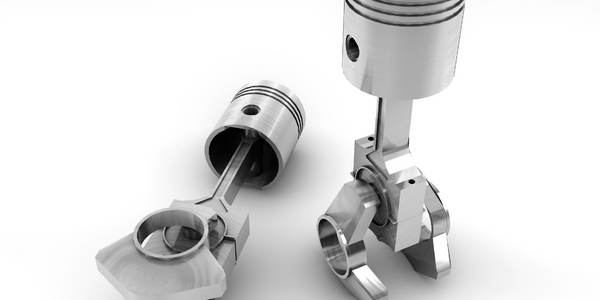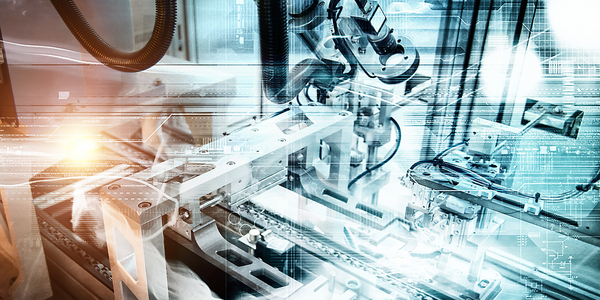еҲ¶йҖ зі»з»ҹиҮӘеҠЁеҢ–

- жұҪиҪҰ
- и®ҫеӨҮдёҺжңәжў°
- зҰ»ж•ЈеҲ¶йҖ
- дә§е“ҒејҖеҸ‘
- иҙЁйҮҸдҝқиҜҒ
е…ЁзҗғжҷәиғҪеҲ¶йҖ еёӮеңәе°Ҷеҝ«йҖҹеўһй•ҝпјҢйў„и®ЎеҲ° 2023 е№ҙе°ҶиҫҫеҲ° 4790.1 дәҝзҫҺе…ғе·ҰеҸігҖӮ
иө„ж–ҷжқҘжәҗпјҡй”Ўе®үеёӮеңәз ”з©¶
иҮӘеҠЁеҢ–еҲ¶йҖ зі»з»ҹеҰӮдҪ•жҸҗдҫӣе•Ҷдёҡд»·еҖјпјҹ
в—Ҹ е‘ҳе·Ҙжӣҙе®үе…Ё
в—Ҹ жҸҗй«ҳз”ҹдә§еҠӣпјҲ24/7 иҝҗиЎҢж—¶й—ҙпјү
в—Ҹ жҸҗй«ҳдә§е“ҒиҙЁйҮҸ
в—Ҹ жӣҙй«ҳзҡ„收зӣҠ
в—Ҹ жӣҙеҮҶзЎ®зҡ„ж•°жҚ®йҮҮйӣҶ
иҮӘеҠЁеҢ–е·Ҙдёҡзі»з»ҹдёҚд»…жҸҗй«ҳдәҶз”ҹдә§иғҪеҠӣпјҢиҖҢдё”жҸҗй«ҳдәҶз”ҹдә§иҙЁйҮҸпјҢеҗҢж—¶жҸҗй«ҳдәҶж“ҚдҪңи®ҫеӨҮзҡ„е‘ҳе·Ҙзҡ„е®үе…ЁжҖ§гҖӮиҝҷдәӣзі»з»ҹиҝҳеҸҜд»Ҙй…ҚзҪ®дёәжҸҗдҫӣжӣҙеҮҶзЎ®зҡ„ж•°жҚ®пјҢд»ҘдјҳеҢ–и–„ејұзҺҜиҠӮ并еӨ§еӨ§еҮҸе°‘дәәдёәй”ҷиҜҜеҜјиҮҙзҡ„дә§е“Ғзјәйҷ·гҖӮ
еҫ®з”өзҪ‘жңүд»Җд№ҲеҘҪеӨ„пјҹ
дёәз”өзҪ‘зҡ„жңҖз»Ҳз”ЁжҲ·е’ҢиҝҗиҗҘе•ҶжҸҗдҫӣз”өиғҪиҙЁйҮҸгҖҒеҸҜйқ жҖ§е’Ңе®үе…ЁжҖ§
еҠ ејәеҲҶеёғејҸиғҪжәҗе’ҢеҸҜеҶҚз”ҹиғҪжәҗзҡ„ж•ҙеҗҲ
е…·жңүжҲҗжң¬з«һдәүеҠӣе’Ңж•ҲзҺҮ
п»ҝе®һзҺ°жҷәиғҪз”өзҪ‘жҠҖжңҜйӣҶжҲҗ
жң¬ең°жҺ§еҲ¶зҡ„з”өиғҪиҙЁйҮҸ
йҖҡиҝҮжңҖеӨ§йҷҗеәҰең°еҲ©з”ЁеҪ“ең°жё…жҙҒиғҪжәҗеҸ‘з”өпјҢжңҖеӨ§йҷҗеәҰең°еҮҸе°‘зўіи¶іиҝ№е’Ңжё©е®Өж°”дҪ“жҺ’ж”ҫ
п»ҝеўһеҠ е®ўжҲ·пјҲжңҖз»Ҳз”ЁжҲ·пјүеҸӮдёҺеәҰ
еҲ¶йҖ жҠҖжңҜзҡ„жңҖж–°и¶ӢеҠҝжҳҜд»Җд№Ҳпјҹ
ж–°зҡ„еҲ¶йҖ жҠҖжңҜдёҚж–ӯж¶ҢзҺ°гҖӮиҝ‘е№ҙжқҘзҡ„дёҖдәӣжңҖеӨ§и¶ӢеҠҝеҢ…жӢ¬пјҡ
- 3D жү“еҚ°пјҡеҮ д№ҺеҸҜд»ҘдҪҝз”ЁйҮ‘еұһгҖҒеЎ‘ж–ҷе’Ңе…¶д»–жқҗж–ҷеҲ¶йҖ д»»дҪ•з»„件пјҢзј©зҹӯдәӨиҙ§ж—¶й—ҙ并з®ҖеҢ–д»Һи®ҫи®ЎеҲ°з”ҹдә§зҡ„жөҒзЁӢ
- дә‘жңҚеҠЎпјҡд»Һд»»дҪ•дҪҚзҪ®еҝ«йҖҹжңүж•Ҳең°е®һзҺ°ж•°жҚ®е’ҢжңҚеҠЎзҡ„иҷҡжӢҹе…ұдә«
- зү©иҒ”зҪ‘ (IoT)пјҡдёҚд»…ж”№еҸҳж¶Ҳиҙ№еёӮеңәпјҢиҝҳж”№еҸҳеҲ¶йҖ иҝҮзЁӢдёӯдҪҝз”Ёзҡ„з”өеӯҗи®ҫеӨҮзҡ„з»ҙжҠӨе’Ңдҝқе…»
- зәізұіжҠҖжңҜпјҡе®һзҺ°жӣҙеҝ«зҡ„и®Ўз®—жңәеӨ„зҗҶгҖҒжӣҙй•ҝзҡ„дә§е“Ғз”ҹе‘Ҫе‘Ёжңҹе’Ңи¶…зІҫеҜҶеҲ¶йҖ пјҢд»ҘеҸҠз©әй—ҙе·ҘзЁӢе’Ңз”ҹзү©жҠҖжңҜзӯүйўҶеҹҹзҡ„ејҖеҲӣжҖ§иҝӣжӯҘ
- е…Ҳиҝӣзҡ„ж•°жҚ®еҲҶжһҗе’Ңйў„жөӢжҠҖжңҜпјҡеңЁеҲ¶йҖ иҝҮзЁӢдёӯе®һзҺ°жӣҙеҘҪзҡ„иҝҮзЁӢжҺ§еҲ¶гҖҒзјәйҷ·йў„йҳІе’Ңжӣҙеҝ«зҡ„е“Қеә”ж—¶й—ҙ
- е·ҘдёҡжңәеҷЁдәәпјҡйҖҡиҝҮиҮӘеҠЁеҢ–еӣ°йҡҫжҲ–еҚ•и°ғзҡ„д»»еҠЎпјҢжҸҗдҫӣжҸҗй«ҳз”ҹдә§еҠӣгҖҒжҸҗй«ҳиҙЁйҮҸе’ҢйҷҚдҪҺжҲҗжң¬зҡ„ж–№жі•гҖӮ
еҲ¶йҖ зі»з»ҹиҮӘеҠЁеҢ–йқўдёҙзҡ„жңҖеӨ§жҢ‘жҲҳжҳҜд»Җд№Ҳпјҹ
в—Ҹ еҲқе§ӢжҠ•иө„жҲҗжң¬
е®һж–ҪиҮӘеҠЁеҢ–еҲ¶йҖ зі»з»ҹеҸӘжңүдёҖдёӘзңҹжӯЈзҡ„зјәзӮ№пјҢйӮЈе°ұжҳҜеҲқе§ӢжҲҗжң¬гҖӮиҝҷеҢ…жӢ¬жңәеҷЁжҲҗжң¬е’Ңе®һж–ҪиҮӘеҠЁеҢ–зј–зЁӢд»ҘеҸҠеҹ№и®ӯе‘ҳе·Ҙд»Ҙз®ЎзҗҶиҝҷдәӣж–°зі»з»ҹгҖӮ然иҖҢпјҢиҝҷйЎ№жҠ•иө„зҡ„жҠ•иө„еӣһжҠҘзҺҮйҖҡеёёдјҡеңЁеҮ е№ҙеҶ…收еӣһжҲҗжң¬гҖӮ
жЎҲдҫӢз ”з©¶.





